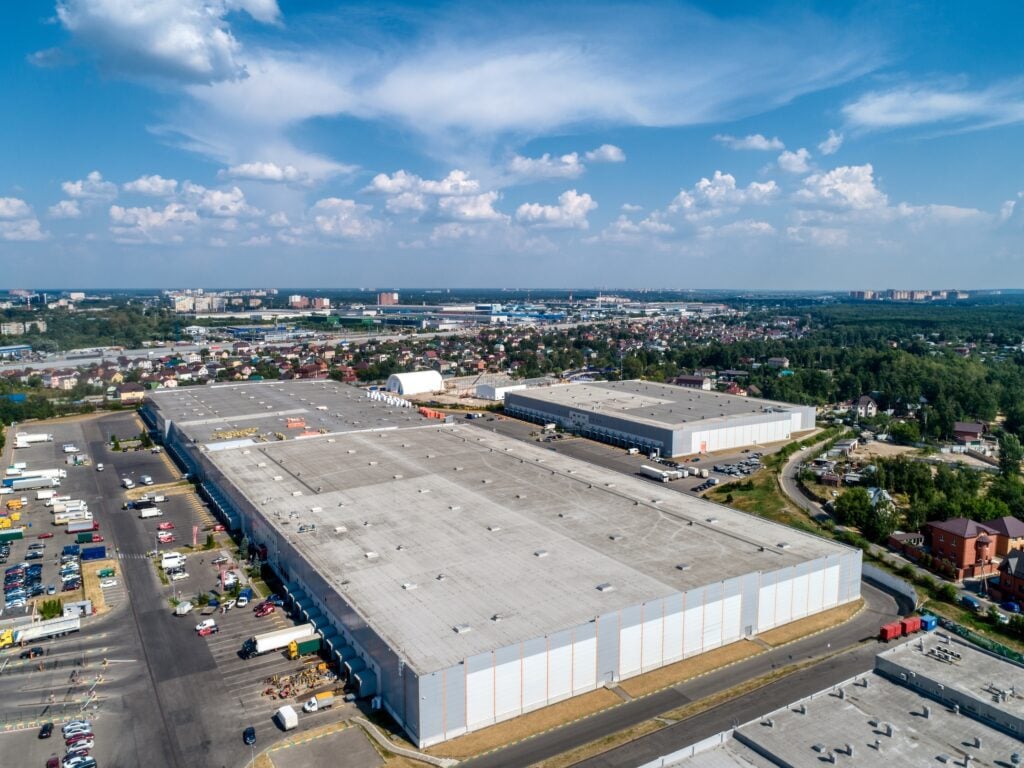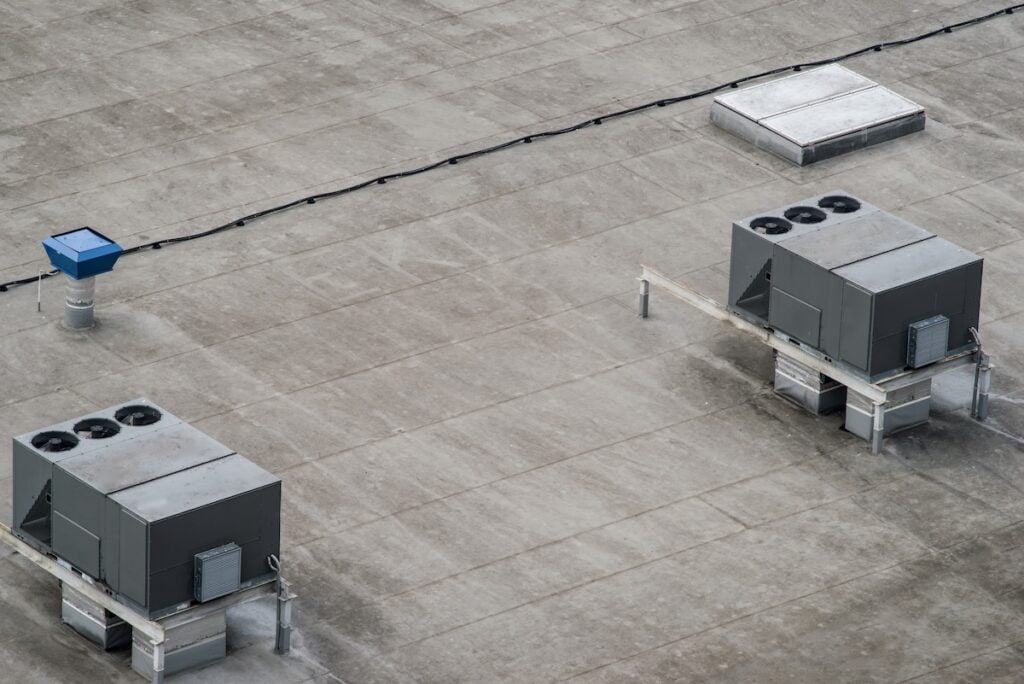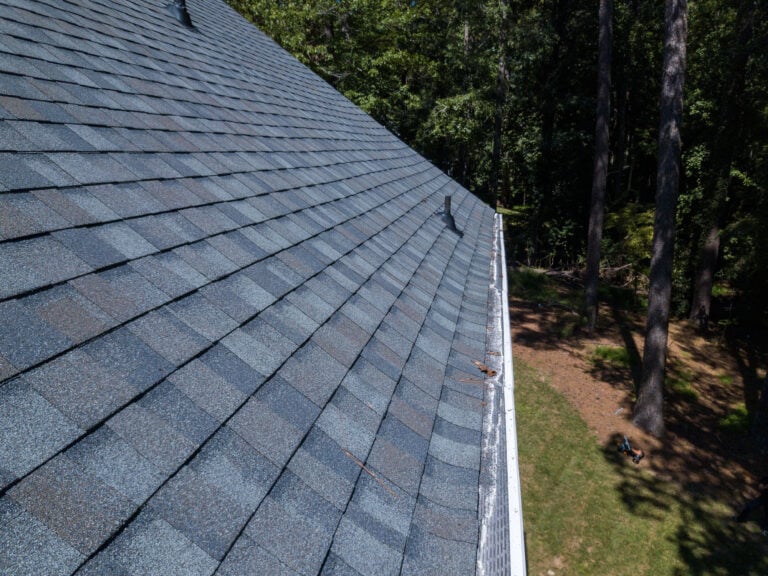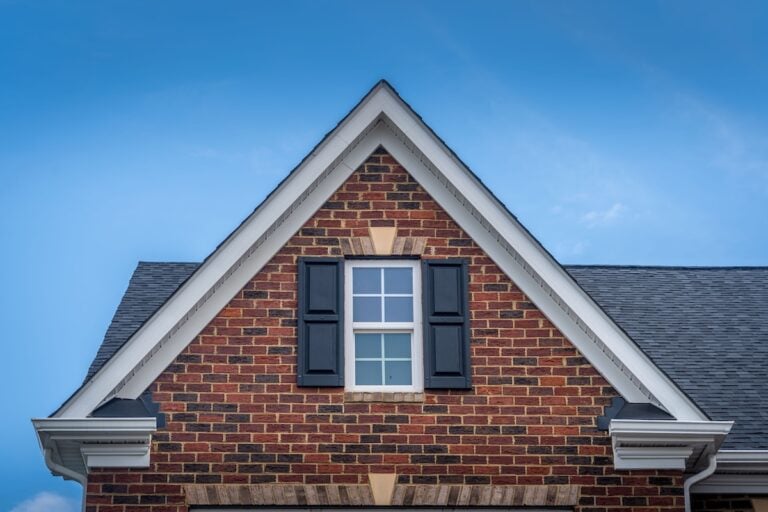Your commercial roof takes a beating year-round from weather, debris, and environmental pollutants. Regular cleaning isn’t just about appearances—it’s about protecting your investment and extending your roof’s lifespan. Many business owners overlook this crucial maintenance task, leading to costly repairs and premature roof replacement.
Commercial roof cleaning requires specialized knowledge, proper equipment, and safety protocols that go far beyond residential cleaning. Whether you’re dealing with a flat membrane roof, metal roofing, or tile system, each material demands specific cleaning approaches to avoid damage while achieving optimal results.
This comprehensive guide covers everything you need to know about commercial roof cleaning, including:
- The importance of regular roof maintenance and cleaning
- Different cleaning methods for various roof types
- Seven expert tips for effective commercial roof cleaning
- When to call professional roofing contractors
Why Commercial Roof Cleaning Matters

Commercial roofs face unique challenges that residential roofs don’t encounter. Heavy foot traffic from maintenance personnel, HVAC equipment, and satellite installations creates wear patterns that trap dirt and debris. Add in pollutants from nearby traffic, industrial operations, and organic growth like algae and moss, and you have a recipe for accelerated roof deterioration.
Regular commercial roof cleaning prevents these contaminants from breaking down roofing materials. Algae and moss, for example, retain moisture against the roof surface, creating conditions that promote rot and membrane degradation. Oil and chemical residues can also react with roofing materials, causing premature aging and failure.
Understanding Different Commercial Roof Types
- Flat and Low-Slope Roofs
- Common on commercial buildings, often using membrane systems like EPDM, TPO, or modified bitumen.
- Metal Roofing Systems
- Require gentle cleaning to prevent scratching or damage to protective coatings.
- Tile and Slate Roofs
- Less common on commercial buildings but present unique challenges.
7 Expert Tips for Commercial Roof Cleaning

Regular commercial roof cleaning extends the lifespan of your roof by preventing damage from debris, mold, and buildup. It also improves energy efficiency and maintains a professional appearance for your business.
1. Schedule Regular Inspections and Cleaning
Don’t wait until your roof looks dirty to schedule cleaning. Establish a regular maintenance schedule based on your building’s location, surrounding environment, and roof type. Buildings near highways, industrial areas, or under heavy tree cover may need cleaning twice yearly, while others might only require annual cleaning.
Create a maintenance calendar that includes visual inspections every few months. Look for signs of algae growth, debris accumulation, or standing water. Early intervention prevents minor issues from becoming major problems that require extensive cleaning or repairs.
2. Use the Right Cleaning Solutions
Different roof materials require specific cleaning products to avoid damage. Harsh chemicals can break down roofing membranes, while mild solutions might not effectively remove stubborn stains or biological growth.
For most commercial roofs, biodegradable cleaning solutions work best. These products effectively remove dirt, algae, and other contaminants without harming the environment or your roofing materials. Always test cleaning solutions on a small, inconspicuous area first to ensure compatibility with your roofing system.
3. Employ Proper Pressure Washing Techniques
Pressure washing can be highly effective for commercial roof cleaning, but it requires expertise to avoid damage. Use lower pressure settings for membrane roofs and adjust the spray angle to prevent water from getting under seams or flashings.
Start cleaning from the highest point and work your way down, allowing gravity to help remove loosened debris. Never use high-pressure settings on aged or damaged roofing materials, as this can cause tears or punctures that lead to leaks.
4. Clear Debris Before Washing
Remove all loose debris, leaves, and branches before beginning the cleaning process. This preliminary step prevents organic matter from clogging drains and gutters during washing. It also allows you to inspect the roof surface for damage that might affect your cleaning approach.
Pay special attention to areas around HVAC units, vents, and other roof-mounted equipment where debris tends to accumulate. These areas often harbor moisture and provide ideal conditions for algae and moss growth.
5. Protect Surrounding Areas
Commercial roof cleaning can create runoff that affects landscaping, sidewalks, and building occupants. Cover plants and outdoor furniture before beginning work, and ensure cleaning solutions won’t damage surrounding surfaces.
Install temporary barriers or tarps to direct runoff away from sensitive areas. This preparation protects your property and demonstrates professionalism to building occupants and neighbors.
6. Address Drainage Issues
Clean gutters, downspouts, and roof drains thoroughly during the cleaning process. Clogged drainage systems can cause water to back up on the roof, leading to leaks and structural damage. Remove all debris from drain openings and flush the system to ensure proper water flow.
Check that all drainage components are securely attached and in good condition. Replace damaged or corroded elements to maintain proper roof drainage and prevent future water problems.
7. Document the Process
Keep detailed records of all cleaning activities, including dates, methods used, and any issues discovered. This documentation helps track your roof’s condition over time and can be valuable for warranty claims or insurance purposes.
Take before and after photos to document the cleaning effectiveness and identify areas that may need special attention during future cleanings. This visual record also helps you communicate with property managers or building owners about maintenance needs.
When to Call Professional Roofing Contractors

While some basic roof maintenance can be handled in-house, commercial roof cleaning often requires professional expertise. Complex roof systems, safety considerations, and the potential for costly damage make professional cleaning a wise investment for most commercial properties.
Why Hire Professional Roofing Contractors?
Professional roofing contractors come equipped with specialized tools, extensive training, and the necessary insurance to clean commercial roofs safely and effectively. Their expertise allows them to handle a wide range of roofing materials, ensuring that each surface is treated with the appropriate methods. Additionally, they can spot early signs of damage or wear, addressing potential problems before they escalate into costly repairs or replacements.
Signs You Need Professional Roof Cleaning
Not sure if it’s time to call in the experts? Here are some clear signs that professional help is needed:
- Algae or Moss Growth: If your roof is showing significant algae or moss buildup, it may lead to damage and reduced lifespan of roofing materials. Professionals can remove this safely without causing harm.
- Damaged Roofing Materials: Cracked, curling, or missing roofing materials require specialized care to prevent further damage.
- Complex Roof Configurations: Roofs with unique designs or difficult-to-reach areas need a professional approach to ensure thorough cleaning and maintenance.
- Tall Buildings: For buildings over two stories, safety becomes a critical concern. Professional contractors are trained and equipped to handle these challenges.
Benefits of Comprehensive Roof Inspections and Maintenance
Hiring professional roofing contractors isn’t just about cleaning. They also provide tailored maintenance plans and detailed roof inspections. These services help preserve the structural integrity of your roof, extend its lifespan, and prevent unexpected issues. With regular maintenance and a professional eye on your roof, you can save money on major repairs and ensure your building stays protected.
Trust the Experts at Palladium Roofing
At Palladium Roofing, we know that keeping your commercial roof in top condition is essential to protecting your property and your investment. With years of experience, certified professionals, and industry-leading tools, we’re committed to delivering reliable, high-quality roof cleaning and maintenance services you can count on.
Don’t leave your roof’s care to chance—trust the team that property managers across the region rely on. Contact Palladium Roofing today to schedule your commercial roof cleaning and let us help you extend the life of your roof while safeguarding your business.





